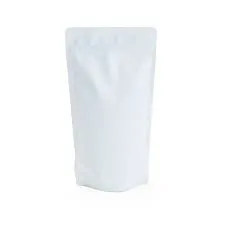- Afrikaans
- Albanian
- Amharic
- Arabic
- Armenian
- Azerbaijani
- Basque
- Belarusian
- Bengali
- Bosnian
- Bulgarian
- Catalan
- Cebuano
- chinese_simplified
- chinese_traditional
- Corsican
- Croatian
- Czech
- Danish
- Dutch
- English
- Esperanto
- Estonian
- Finnish
- French
- Frisian
- Galician
- Georgian
- German
- Greek
- Gujarati
- haitian_creole
- hausa
- hawaiian
- Hebrew
- Hindi
- Miao
- Hungarian
- Icelandic
- igbo
- Indonesian
- irish
- Italian
- Japanese
- Javanese
- Kannada
- kazakh
- Khmer
- Rwandese
- Korean
- Kurdish
- Kyrgyz
- Lao
- Latin
- Latvian
- Lithuanian
- Luxembourgish
- Macedonian
- Malgashi
- Malay
- Malayalam
- Maltese
- Maori
- Marathi
- Mongolian
- Myanmar
- Nepali
- Norwegian
- Norwegian
- Occitan
- Pashto
- Persian
- Polish
- Portuguese
- Punjabi
- Romanian
- Russian
- Samoan
- scottish-gaelic
- Serbian
- Sesotho
- Shona
- Sindhi
- Sinhala
- Slovak
- Slovenian
- Somali
- Spanish
- Sundanese
- Swahili
- Swedish
- Tagalog
- Tajik
- Tamil
- Tatar
- Telugu
- Thai
- Turkish
- Turkmen
- Ukrainian
- Urdu
- Uighur
- Uzbek
- Vietnamese
- Welsh
- Bantu
- Yiddish
- Yoruba
- Zulu
Effective Techniques for Drying and Curing Cannabis for Optimal Quality and Flavor
The Importance of Drying and Curing Cannabis A Comprehensive Guide
When it comes to cultivating cannabis, many growers focus on the intricacies of the plant’s cultivation, including genetics, feeding schedules, and lighting conditions. However, the post-harvest processes of drying and curing are often overlooked, yet these steps are critical to ensuring high-quality cannabis. Proper drying and curing can significantly enhance the flavor, potency, and overall experience of the final product.
Understanding Drying
Drying is the initial step that takes place after harvesting cannabis. This process involves removing the moisture from the plant material to prevent mold growth and degradation of quality. Cannabis is harvested, and the buds are carefully trimmed from the branches. Typically, growers hang the whole plant upside down in a dark, controlled environment with low humidity and stable temperatures, ideally around 60-70°F (15-21°C) and 50-60% humidity.
The drying process usually takes about 7 to 14 days, depending on the environmental conditions and size of the buds. During this time, the moisture within the buds evaporates, leading to a steady decrease in water content. It is crucial that the drying process not be rushed; if cannabis dries too quickly – for instance, in a warm, dry room – it can lead to harsh smoke and diminished taste. Conversely, drying too slowly can result in mold and mildew, especially if the humidity levels are not adequately monitored.
The Importance of Curing
Once the drying process is complete, it is time to move onto curing. Curing is an essential step that allows the cannabis to age and develop its flavors, aromas, and potency. The curing process typically involves placing the dried buds into airtight containers, such as mason jars, and storing them in a cool, dark place.
drying and curing canabis

The main goal of curing is to allow the remaining moisture within the buds to evenly distribute throughout the material, reducing the risk of mold while enhancing the overall quality. Proper curing can last anywhere from two weeks to several months, with the sweet spot often being around four to eight weeks. During this time, it’s important for growers to “burp” the jars by opening them for a short period each day to release built-up gases and allow fresh air in. This practice helps to ensure that the buds cure evenly and do not develop any unwanted moisture.
Benefits of Proper Drying and Curing
The benefits of properly drying and curing cannabis are multifaceted. First and foremost, curing enhances the aromatic profile of the buds. During the curing phase, the chlorophyll and other harsh compounds in the plant continue to break down, resulting in a smoother, more enjoyable smoke. Additionally, the terpene profiles of the cannabis can fully develop, giving the buds their distinct flavors and scents that cannabis connoisseurs have come to appreciate.
Moreover, the cannabinoid profile of the cannabis can improve due to an increased breakdown of acids in the plant, transforming THCA into THC, which is responsible for the psychoactive effects of cannabis. As a result, well-cured cannabis can deliver a more potent experience than hastily dried bud.
Lastly, proper drying and curing can significantly impact the shelf life of cannabis. Cannabis that is not adequately dried or cured can degrade quickly, losing potency and flavor over time. In contrast, cannabis that has been properly cured can maintain its quality for months, if not years, when stored correctly.
Conclusion
In conclusion, while growing cannabis can be a labor-intensive endeavor, it's essential not to overlook the significance of the drying and curing processes. These steps are crucial to maximizing the plant’s potential in terms of flavor, potency, and overall quality. By dedicating time and care to these post-harvest practices, growers can ensure their hard work results in a superior product that offers an exceptional experience for consumers. A little patience goes a long way in the world of cannabis cultivation – after all, the best things in life are worth waiting for.













